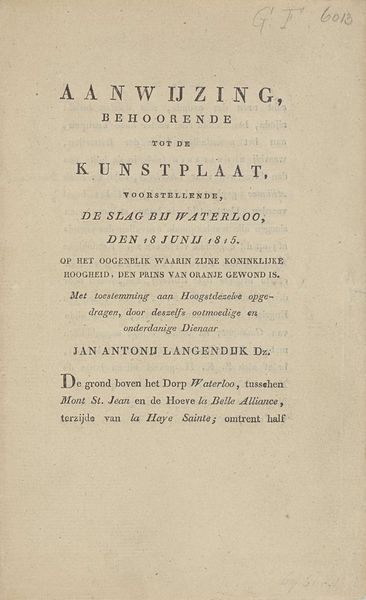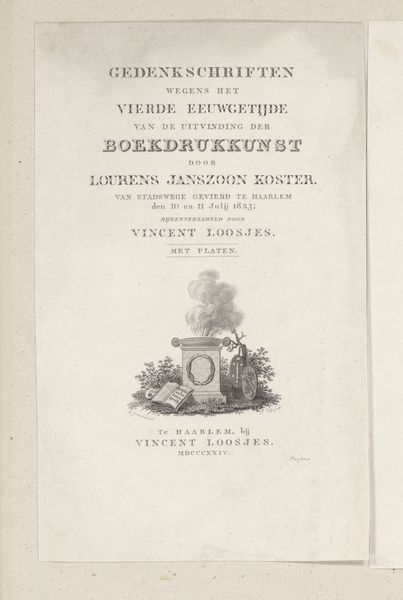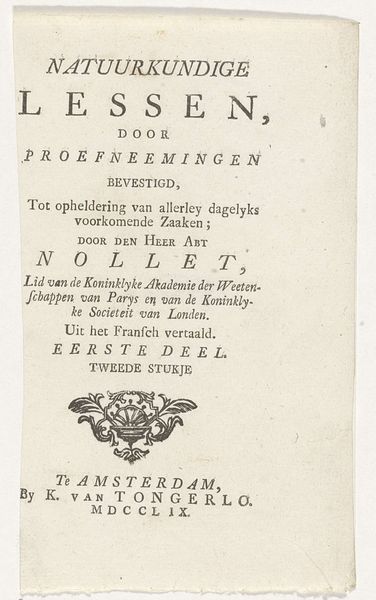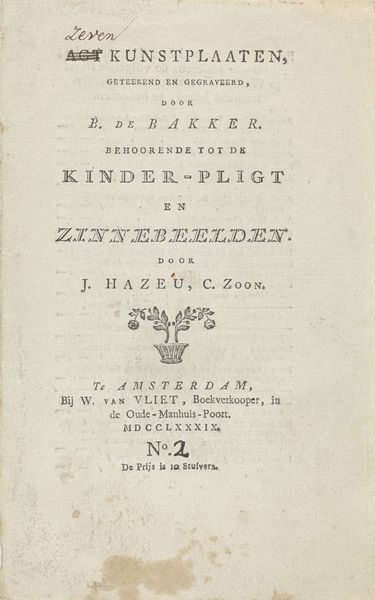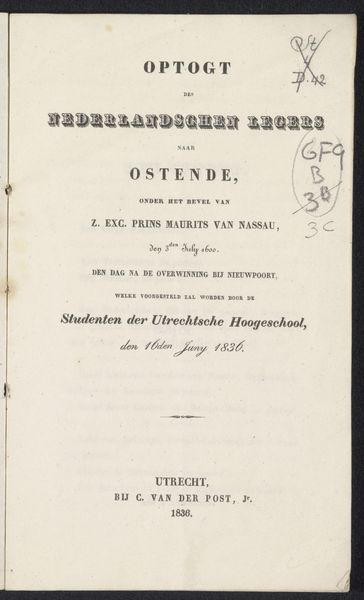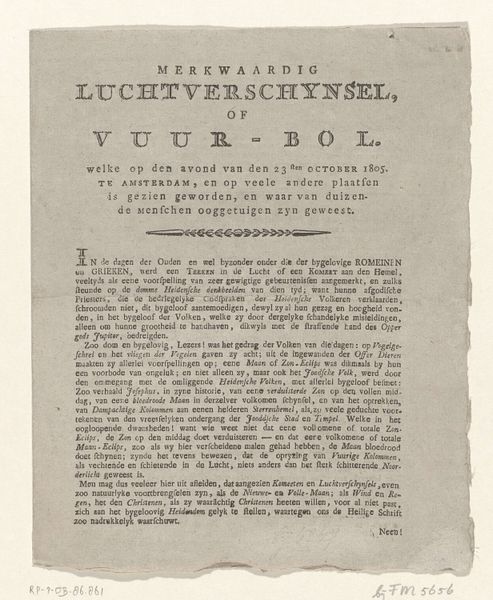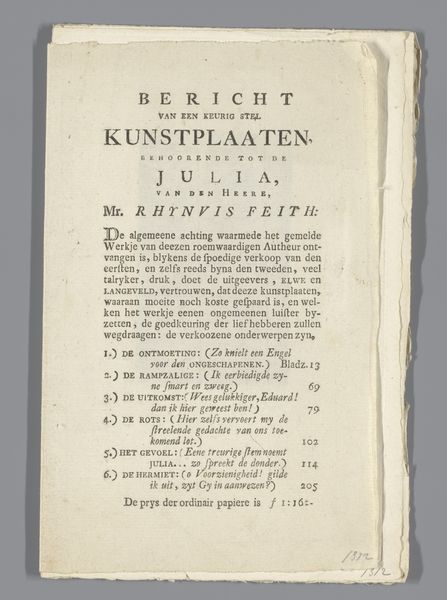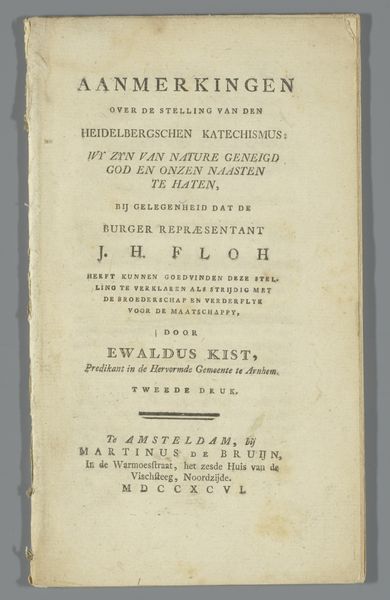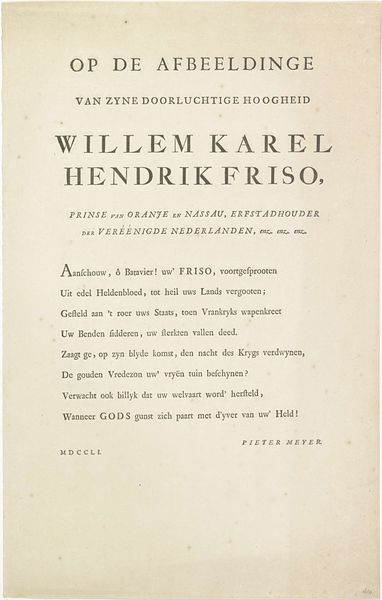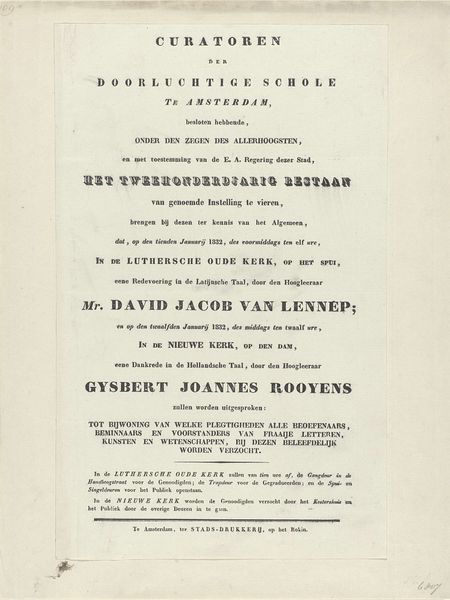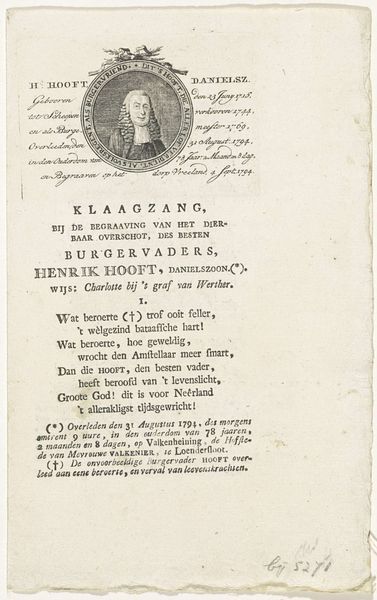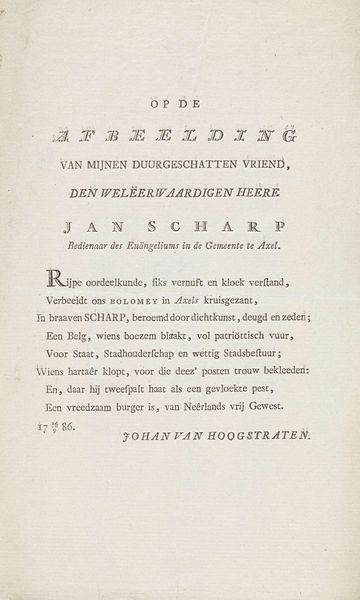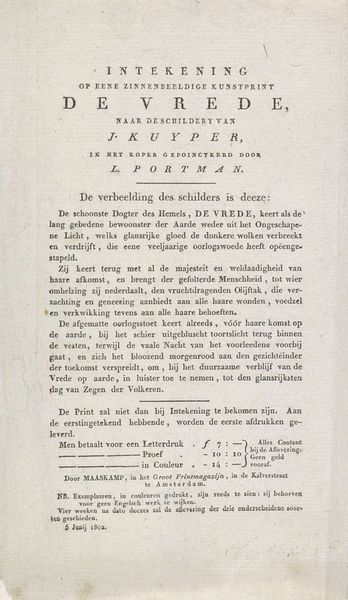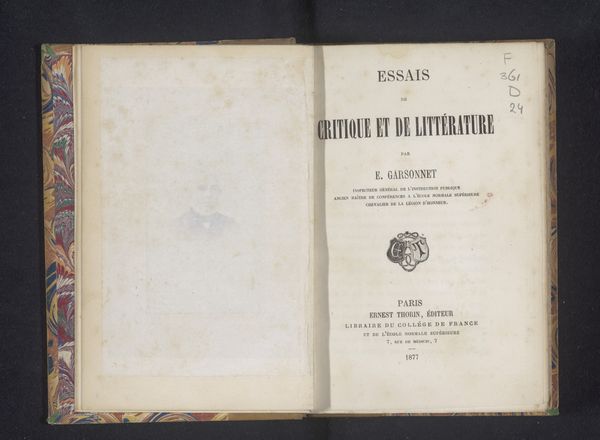
Uitgeversprospectus van de twee platen van de slagen bij Hasselt en Leuven, 1831 1831 - 1832
0:00
0:00
print, textile, typography
# print
#
textile
#
typography
Dimensions: height 230 mm, width 135 mm
Copyright: Rijks Museum: Open Domain
Editor: Here we have a prospectus printed by the Gebroeders van Arum between 1831 and 1832. It’s advertising two prints of the battles of Hasselt and Leuven, and it strikes me how the typography itself conveys a sense of formality and national pride. What do you see in this piece? Curator: What intrigues me most is its existence as a mass-produced object, a material artifact of Dutch nationalism. We must ask, who was consuming these images and for what purpose? The very act of printing and disseminating these images positions them not as unique works of art, but as commodities tied to specific social and political agendas. Notice the price; who could afford it? Editor: So you’re saying the print’s importance lies in its role as a form of propaganda? Curator: Precisely. Think about the materials: the paper, the ink, the printing press itself. All these elements speak to the infrastructure of knowledge production and the dissemination of nationalist ideology. Were these prints widely circulated, or were they mostly accessed by a specific, affluent demographic? Where were these images displayed? In homes, in public spaces, what purpose did they serve beyond simple documentation? Editor: That shifts my understanding from aesthetic appreciation to thinking about the print as a tool, a manufactured object that played a role in shaping public opinion. It’s interesting to consider how the production and consumption of such images contributed to the broader cultural and political landscape. Curator: Exactly. We need to investigate who controlled the means of production and what interests they served. These aren't just images; they're meticulously crafted instruments. Editor: I see, considering its cost. This helps to reconsider prints as products manufactured with great intentions, or, like you say, as instruments for disseminating knowledge to the interested groups. Curator: Well, I think there is so much to look at as cultural artefacts!
Comments
No comments
Be the first to comment and join the conversation on the ultimate creative platform.
